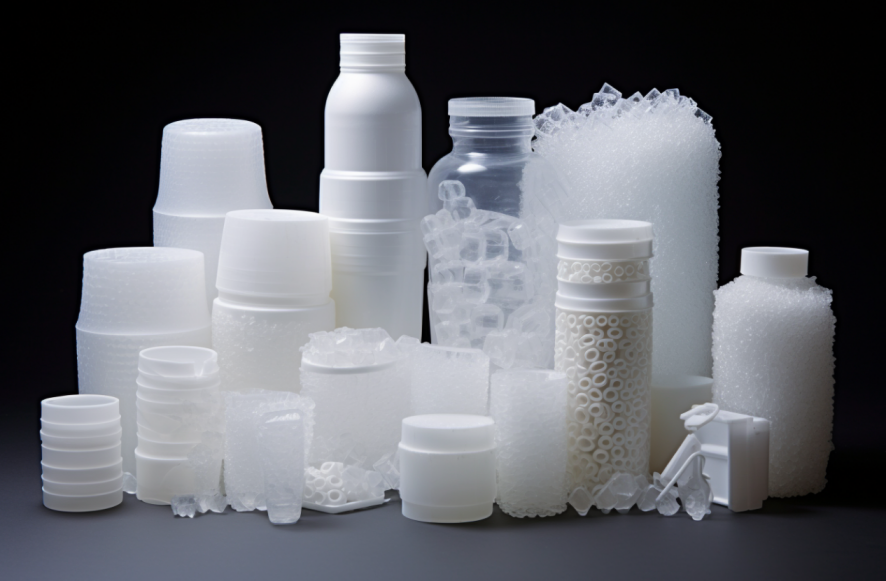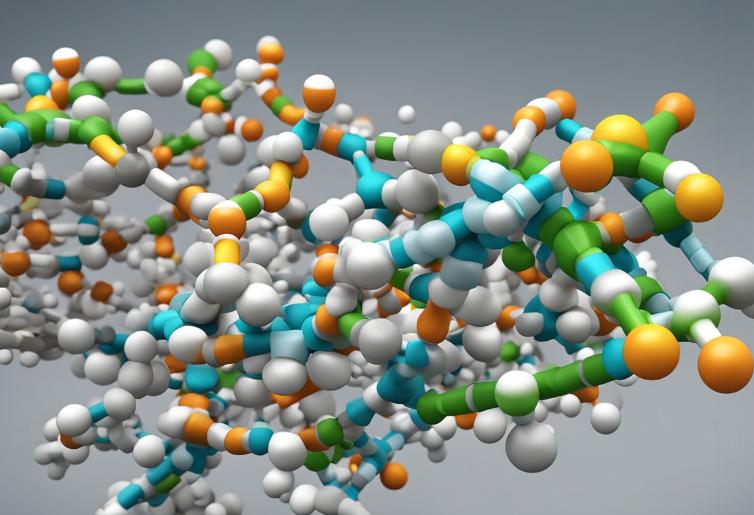What are the future prospects of polystyrene PS plastic in the context of sustainability
15/04/2024
Polystyrene (PS) plastic, a versatile synthetic polymer, holds a ubiquitous presence in our daily lives. Renowned for its lightweight nature and insulating properties, PS plastic finds application across various industries, from packaging to construction. Understanding the properties, manufacturing process, and environmental impact of PS plastic is essential for comprehending its role in today’s society.
Introduction to Polystyrene (PS) Plastic
1.1 What is Polystyrene PS Plastic?
It is a thermoplastic polymer derived from the monomer styrene. It exists in two main forms: expanded polystyrene (EPS) and crystal polystyrene (PS). EPS, recognizable for its foam-like structure, is commonly used in packaging and insulation. On the other hand, PS in its crystal form is employed in applications requiring transparency and rigidity, such as food containers and disposable cutlery.
1.2 Properties and Characteristics of Polystyrene PS Plastic
It boasts several key properties that contribute to its widespread use. It exhibits excellent thermal insulation, making it ideal for keeping food and beverages hot or cold. Additionally, PS plastic is lightweight, durable, and resistant to moisture, making it suitable for packaging fragile items. However, its brittleness and low resistance to heat limit its use in certain applications.
1.3 Common Uses and Applications of Polystyrene PS Plastic
It finds diverse applications across numerous industries. In the packaging sector, it is utilized for manufacturing foam packaging materials, protective packaging, and disposable cups and containers. The construction industry employs PS plastic in insulation boards, concrete forms, and decorative moldings due to its thermal insulation properties. Moreover, PS plastic is prevalent in the manufacturing of consumer goods such as toys, CD cases, and stationery items.
The Manufacturing Process of Polystyrene PS Plastic
2.1 Overview of the Production Process of Polystyrene PS Plastic
The production of it typically begins with the polymerization of styrene monomers. This process involves linking the styrene molecules together to form long chains of polystyrene. Subsequently, the polymerized styrene is processed using various methods such as extrusion or injection molding to achieve the desired shape and form of the final product.
2.2 Raw Materials Used in Polystyrene PS Plastic Manufacturing
The primary raw material for manufacturing it is styrene, which is derived from petroleum or natural gas. Additionally, additives such as plasticizers, flame retardants, and colorants may be incorporated to enhance the properties and functionality of the final product.
2.3 Different Methods of Polystyrene PS Plastic Production
Polystyrene PS plastic can be produced through different methods depending on the desired application and product specifications. Extrusion is commonly used for producing PS foam sheets and packaging materials, while injection molding is employed for manufacturing rigid PS products such as disposable cups and containers.
2.4 Environmental Considerations in Polystyrene PS Plastic Production
The production of polystyrene PS plastic raises environmental concerns due to its reliance on fossil fuel-derived raw materials and energy-intensive manufacturing processes. Efforts to mitigate these impacts include increasing the use of recycled polystyrene and exploring alternative feedstocks such as bio-based or recycled styrene monomers.

The Environmental Impact of Polystyrene PS Plastic
3.1 Discussion on the Non-Biodegradability of Polystyrene PS Plastic
One of the most significant environmental challenges associated with it is its non-biodegradability. Traditional PS plastic has persisted in the environment for hundreds of years, contributing to litter and pollution in landfills, waterways, and marine environments.
3.2 Effects of Polystyrene PS Plastic Pollution on Marine and Terrestrial Ecosystems
Polystyrene PS plastic pollution poses serious threats to marine and terrestrial ecosystems. Marine wildlife often mistake PS plastic debris for food, leading to ingestion and entanglement, which can result in injury or death. Additionally, PS plastic pollution degrades habitats, disrupts ecosystems, and poses risks to human health throughout the food chain.
3.3 Challenges in Recycling Polystyrene PS Plastic and Alternatives for Disposal
Recycling polystyrene PS plastic presents challenges due to its low density and contamination issues. However, advancements in recycling technologies and increased consumer awareness have led to improvements in PS plastic recycling rates. Additionally, alternatives such as incineration with energy recovery and biodegradable substitutes offer potential solutions for managing PS plastic waste.
3.4 Efforts and Innovations in Reducing the Environmental Impact of Polystyrene PS Plastic
Numerous initiatives are underway to address the environmental impact of it. These include research and development of biodegradable alternatives, promotion of recycling and waste reduction strategies, and advocacy for policy measures to regulate PS plastic use and disposal.
Understanding Health Risks Associated with Polystyrene PS Plastic
Polystyrene PS plastic, while widely used in various industries, raises concerns regarding potential health hazards associated with exposure. Understanding these risks is crucial for informed decision-making regarding its use and disposal.
4.1 Examination of Potential Health Hazards Linked to Polystyrene PS Plastic Exposure
Studies have indicated potential health risks associated with it exposure. Inhalation of styrene vapors, released during the production and processing of PS plastic, may cause respiratory irritation and neurological effects in workers. Additionally, prolonged exposure to styrene has been linked to adverse health effects, including headaches, dizziness, and fatigue.
4.2 Studies on the Leaching of Chemicals from Polystyrene PS Plastic into Food and Beverages
Concerns have also been raised regarding the leaching of chemicals from it into food and beverages. Research suggests that certain additives used in PS plastic production, such as styrene oligomers and residual monomers, may migrate into food and beverages, especially when exposed to heat or acidic conditions. This raises potential health risks associated with the ingestion of these chemicals.
4.3 Regulatory Measures and Safety Standards Concerning Polystyrene PS Plastic Usage
To address health concerns associated with it, regulatory agencies have established safety standards and guidelines for its usage. These regulations aim to limit exposure to harmful chemicals and ensure the safety of consumers and workers involved in the production and handling of PS plastic. Compliance with these standards is essential for manufacturers to mitigate health risks associated with PS plastic usage.
4.4 Tips for Minimizing Exposure to Polystyrene PS Plastic in Daily Life
Individuals can take proactive steps to minimize their exposure to it in daily life. This includes avoiding microwaving food in PS plastic containers, opting for alternatives such as glass or stainless steel containers for food storage, and using reusable or biodegradable alternatives to PS plastic products whenever possible. By making informed choices, consumers can reduce their exposure to potential health risks associated with PS plastic.
Exploring Alternatives to Polystyrene PS Plastic
5.1 Introduction to Biodegradable and Sustainable Alternatives to Polystyrene PS Plastic
Amid growing concerns about the environmental and health impacts of polystyrene PS plastic, there is increasing interest in biodegradable and sustainable alternatives. Materials such as polylactic acid (PLA), polyhydroxyalkanoates (PHA), and compostable plastics offer promising alternatives to traditional PS plastic, as they are derived from renewable resources and biodegrade under appropriate conditions.

5.2 Comparison of Alternative Materials Such as PLA, PHA, and Compostable Plastics
Each alternative material has its unique properties and applications. PLA, derived from corn starch or sugarcane, is biodegradable and suitable for food packaging and disposable products. PHA, produced by bacteria through fermentation, offers similar properties to conventional plastics and is biodegradable in various environments. Compostable plastics, certified to break down into organic matter under specific conditions, provide an eco-friendly option for single-use items.
5.3 Case Studies of Businesses and Industries Adopting Alternative Materials
Numerous businesses and industries are already embracing alternative materials to reduce their reliance on it. From food packaging companies switching to PLA containers to retail chains offering compostable shopping bags, there are countless examples of businesses integrating sustainable alternatives into their operations. These case studies highlight the feasibility and benefits of transitioning away from PS plastic towards more environmentally friendly options.
5.4 Challenges and Future Prospects of Replacing PS Plastic with Eco-friendly Alternatives
While the adoption of alternative materials presents significant opportunities for reducing the environmental impact of PS plastic, challenges remain. These include cost considerations, scalability of production, and consumer acceptance of new materials. However, with continued innovation and collaboration across industries, the future prospects of replacing PS plastic with eco-friendly alternatives appear promising, paving the way for a more sustainable future.
Exploring Innovations and Future Trends in Polystyrene PS Plastic
6.1 Exploration of Recent Advancements in Polystyrene PS Plastic Technology and Research
In recent years, advancements in it technology and research have focused on enhancing its sustainability and recyclability. Innovations such as chemical recycling processes and the development of bio-based PS plastic offer potential solutions for reducing the environmental impact of PS plastic production and disposal.
6.2 Emerging Trends in the Use of Recycled Polystyrene PS Plastic and Upcycling Initiatives
The recycling and upcycling of it present opportunities to divert waste from landfills and promote a circular economy. Emerging trends include the utilization of recycled PS plastic in new product manufacturing, such as construction materials, packaging, and consumer goods. Additionally, upcycling initiatives transform discarded PS plastic into innovative products, further reducing its environmental footprint.
6.3 Potential Applications of Polystyrene PS Plastic in Novel Fields or Industries
The versatility of it extends to novel fields and industries, where its unique properties offer innovative solutions. From 3D printing and biomedical applications to lightweight automotive components and renewable energy technologies, the potential applications of PS plastic continue to expand, driving innovation and sustainability across various sectors.
6.4 Predictions for the Future of Polystyrene PS Plastic and its Role in the Circular Economy
As global efforts to address plastic pollution and promote sustainability intensify, the future of polystyrene PS plastic hinges on its ability to adapt and evolve. By embracing technological advancements, adopting circular economy principles, and prioritizing environmental stewardship, polystyrene PS plastic can play a valuable role in the transition toward a more sustainable and circular economy.
Conclusion
In conclusion, while polystyrene PS plastic offers valuable properties and versatility in various applications, its environmental impact and disposal challenges necessitate proactive measures to mitigate pollution and promote sustainable alternatives. As consumers and industries alike strive towards a more environmentally conscious future, addressing the issues surrounding polystyrene PS plastic is paramount in achieving a cleaner and healthier planet.




